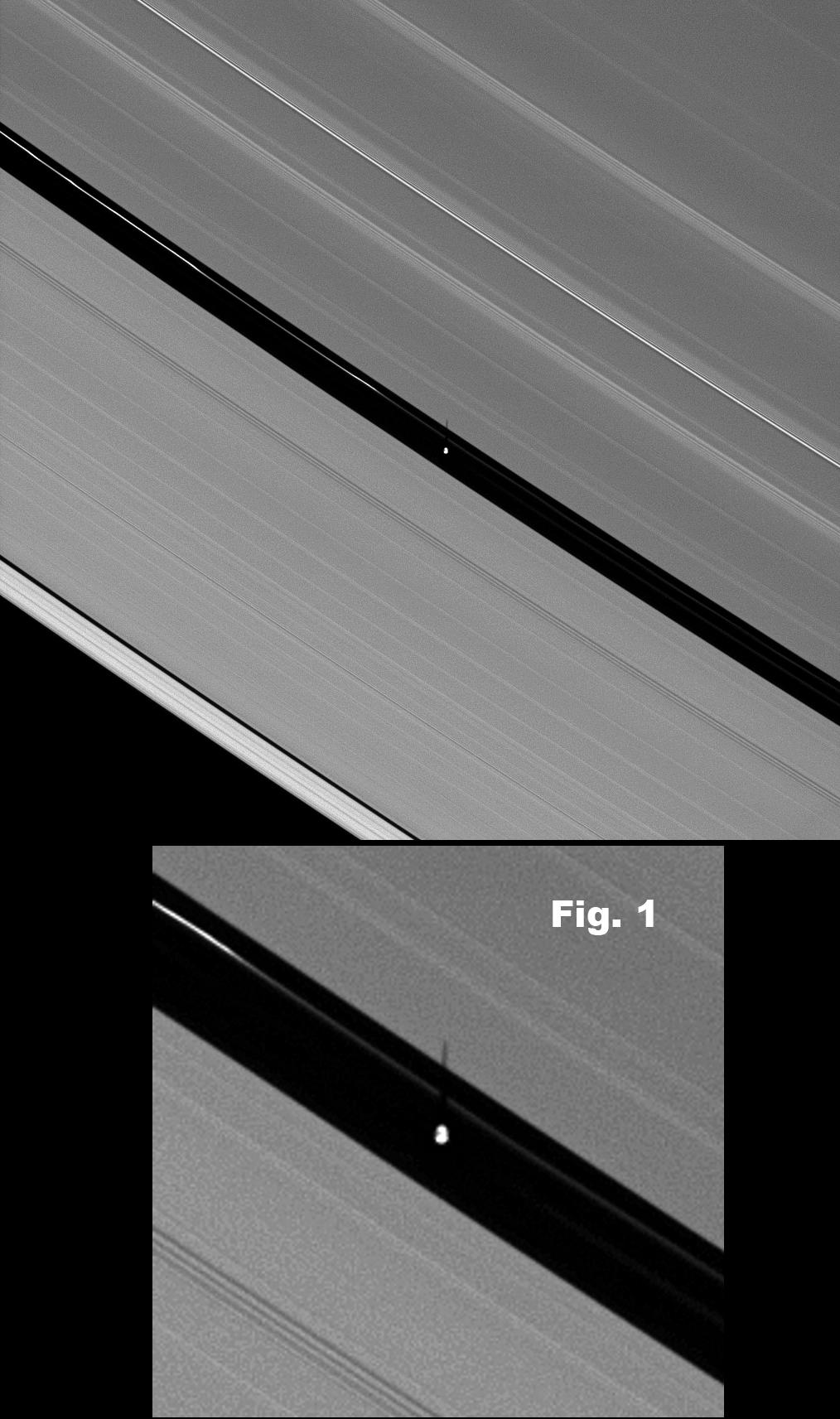Pan’s Very Own Shadow

| PIA Number | PIA11652 |
|---|---|
| Language |
|
Wendy Darling famously helped Peter Pan catch his shadow, and now Cassini captures the shadow of another Pan: Saturn's 30-kilometer (19-mile) wide moon inhabiting the Encke Gap.
In the center of this image, the shadow of Pan is a short streak thrown over the edge of the A ring where Pan travels its path through the Encke Gap. A second version of this image has been included to focus on Pan's shadow. The image has been scaled to three times its original size and cropped as shown in Fig. 1.
One of the happy results of Saturn's 29-year revolution around the sun is the changing elevation of the sun seen from the planet, and the changing elevation of the shadows of the rings and moons that the sun's apparent motion brings.
As Saturn approaches equinox, the angle at which the ringplane is inclined away from the sun will continue to decrease until August 2009, when equinox will bring about an alignment of the plane containing the rings with the rays of the sun. Only around the time of equinox is a moon's shadow cast on the rings rather than the planet.
Between now and equinox in August, the shadows cast by the moons on the rings will grow longer with time.
Cassini scientists planned a series of observations to chronicle these sights, knowing that the resulting images could hold valuable information about vertical displacements in the rings and the orbital inclinations of the shadow-casting moons. These planned images of course hold another reward: the simple but spectacular depiction of the path of sunlight across the solar system.
The image was taken in visible light with NASA's Cassini spacecraft narrow-angle camera on Feb. 12, 2009. This view looks toward the un-illuminated side of the rings from about 55 degrees above the ringplane. The view was obtained at a distance of approximately 997,000 kilometers (619,000 miles) from Pan and at a sun-Pan-spacecraft, or phase, angle of 112 degrees. Image scale is 6 kilometers (4 miles) per pixel.
The Cassini-Huygens mission is a cooperative project of NASA, the European Space Agency and the Italian Space Agency. The Jet Propulsion Laboratory, a division of the California Institute of Technology in Pasadena, manages the mission for NASA's Science Mission Directorate, Washington, D.C. The Cassini orbiter and its two onboard cameras were designed, developed and assembled at JPL. The imaging operations center is based at the Space Science Institute in Boulder, Colo.
For more information about the Cassini-Huygens mission visit http://saturn.jpl.nasa.gov . The Cassini imaging team homepage is at http://ciclops.org .
Credit: NASA/JPL/Space Science Institute
